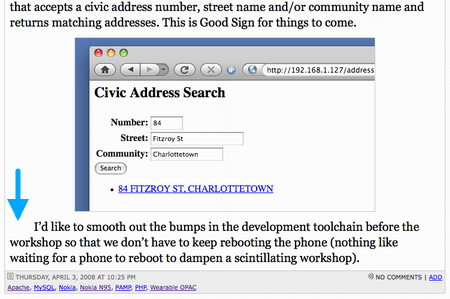One of the problems with knowing a little about a lot of things is that you end up missing out on the subtle details of a lot of things.
And so it was with adjacent sibling selectors.
While I have received expert-level flack for my indentation of paragraphs here on the blog — I believe the criticism was along the lines of “that’s so print” — I simply cannot reconcile myself to using vertical space to separate paragraphs.
This style is not without its challenges. For the longest time I opened every blog post with:
<p class="noindent">
just so the first paragraph wouldn’t include the standard 2em indent. Eventually I eliminated the need for this with better CSS:
.onepost < p:first-child {
text-indent: 0;
}
That automagically removes the indenting from the first paragraph of a post. But I was still left with the issue of not wanting to indent the first paragraph following an image:

It turns out there was a really, really easy way to achieve this that I had absolutely no knowledge of: using an adjacent sibling selector:
img + p {
text-indent: 0;
}
In other words, “if a paragraph follows an image, then don’t indent it.” Neato. I’ve added similar logic for paragraphs following code blocks (like this paragraph), blockquotes, and lists.
 I am
I am
Comments
You’re probably aware, but
You’re probably aware, but this doesn’t work in Internet Explorer 6.
I suppose it’s not supported
I suppose it’s not supported by Netscape 3 either.
Yeah, but Netscape 3 doesn’t
Yeah, but Netscape 3 doesn’t still have over 30% of the market: http://www.w3schools.com/brows…
Thank goodness I can ignore
Thank goodness I can ignore the market, and design for the cool people who know better ;-)
To make matters worse, this
To make matters worse, this comment box breaks on Safari 3.1. Actually, that wouldn’t make matters worse. Safari only accounts for a whopping 2% of the market. Ah the joys of web development!
Add new comment